In the long and tumultuous history of the Israeli–Palestinian conflict, certain events stand out for their sheer devastation and impact on the quest for peace in the region. The recent Rafah Safe Zone attack, resulting in 35 deaths, is one such harrowing episode that underscores the volatile nature of relations between Israel and the Palestinians. This incident not only adds to the growing toll of human lives lost in this decades-long conflict but also highlights the complex interplay of political, territorial, and human rights issues at its heart. As the world watches, the repercussions of such actions threaten to further entrench divisions and hinder any progress toward a lasting peace.
This article delves into the background information necessary to understand the current dynamics of the Israeli–Palestinian conflict, including the roles played by key actors such as Israel, Hamas, and the Palestinian Authority, as well as the influence of international bodies like the United Nations. It will provide detailed insights into the Israeli strikes on Rafah, examining the strategic motivations, the immediate aftermath, and the broader implications for both Palestinians and Israelis. You will also find an analysis of global reactions, ranging from official statements by governments to international criminal court considerations and human rights concerns, alongside a discussion of the impact of such events on the prospects for achieving self-determination for Palestinians and a two-state solution. By concluding with an overview of the complex path forward, this article aims to offer a comprehensive view of the latest chapter in the Israeli–Palestinian conflict and its significance for future peace efforts.
Background Information
The Genesis of the Israeli-Palestinian Conflict
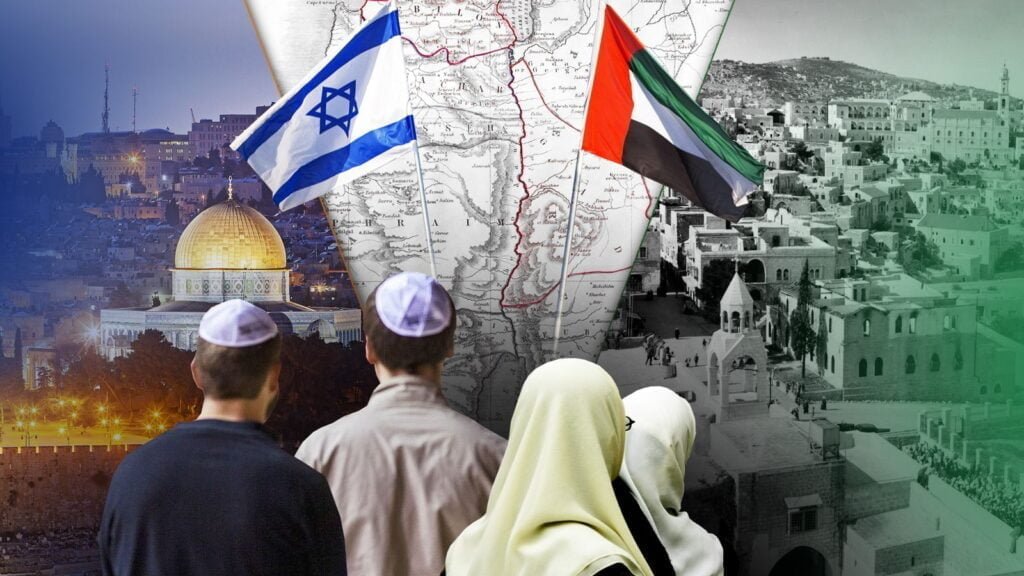
The roots of the Israeli-Palestinian conflict can be traced back to the late 19th century, but a pivotal moment occurred in 1947 when the United Nations passed Resolution 181, also known as the Partition Plan. This plan aimed to divide the British Mandate of Palestine into separate Arab and Jewish states. Following the declaration of the State of Israel on May 14, 1948, the first Arab-Israeli War broke out, leading to Israel’s victory in 1949. This war resulted in the displacement of approximately 750,000 Palestinians and the division of the territory into three parts: the State of Israel, the West Bank, and the Gaza Strip 4.
Escalation and Key Conflicts
Tensions escalated over the years, particularly between Israel and neighboring countries such as Egypt, Jordan, and Syria. The 1956 Suez Crisis and subsequent events led these nations to sign mutual defense pacts, anticipating potential Israeli military actions. In 1967, Israel launched preemptive strikes against Egyptian and Syrian air forces, initiating the Six-Day War. This conflict ended with Israel gaining control of significant territories including the Sinai Peninsula, Gaza Strip, West Bank, East Jerusalem, and the Golan Heights 4.
The Road to Peace and Persistent Challenges
Despite the signing of the Camp David Accords in 1979, which ended the conflict between Egypt and Israel, the issue of Palestinian self-determination remained unresolved. The first intifada in 1987 marked a significant uprising by Palestinians against the Israeli government. This led to the Oslo I Accords in 1993, establishing a framework for Palestinian self-governance in the West Bank and Gaza, and mutual recognition between the Palestinian Authority and Israel. The Oslo II Accords in 1995 furthered this agreement, requiring Israeli withdrawal from several areas in the West Bank 4.
Continued Conflict and International Involvement
The second intifada in 2000, sparked by frustrations over the peace process and a controversial visit by then-Israeli Prime Minister Ariel Sharon to a significant Islamic site, led to severe violence and the construction of a barrier wall around the West Bank. The international community, including the International Court of Justice and the International Criminal Court, largely opposed this action 4.
Political Dynamics in Gaza
The election of Hamas in 2006 further complicated the political landscape. Hamas, considered a terrorist organization by many Western governments, took control of the Gaza Strip, leading to violent clashes with the Fatah party. Despite numerous attempts at peace talks and reconciliation, the region has seen continued conflict and failed negotiations 4.
Rafah’s Strategic Importance
The Rafah border crossing with Egypt has been a critical point for the Gaza Strip, serving as the main route for aid and as an escape path during conflicts. Despite the ongoing siege and calls for military operations at this crossing, international bodies and leaders have stressed its importance for humanitarian reasons and warned against further escalations that could lead to a humanitarian disaster 5.
These historical and ongoing events provide a crucial context for understanding the complexities of the Israeli-Palestinian conflict, highlighting the deep-rooted issues and the challenging path towards peace and stability in the region.
Details of the Israeli Strikes on Rafah
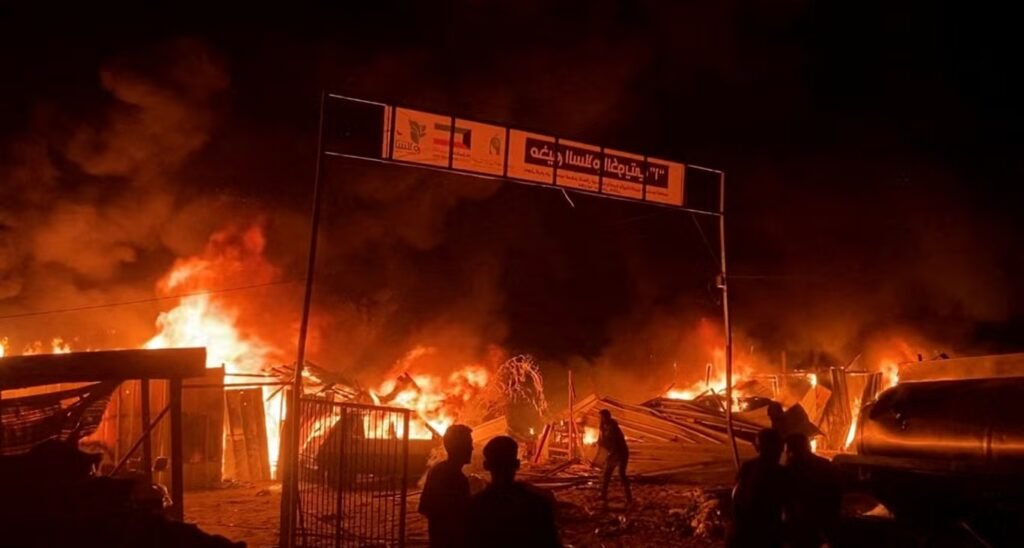
Time and Location of the Strikes
Israeli forces launched a series of airstrikes targeting a tent camp in Rafah, a city in the southern Gaza Strip. This area had been designated by the Israeli military as a humanitarian safe zone for displaced Palestinians 1113. The strikes occurred on a Sunday, affecting several tents in the vicinity, with the use of missiles and 2,000-pound bombs 13. Notably, the targeted area was sheltering at least 100,000 displaced people at the time of the attack 13.
Casualties and Injuries Reported
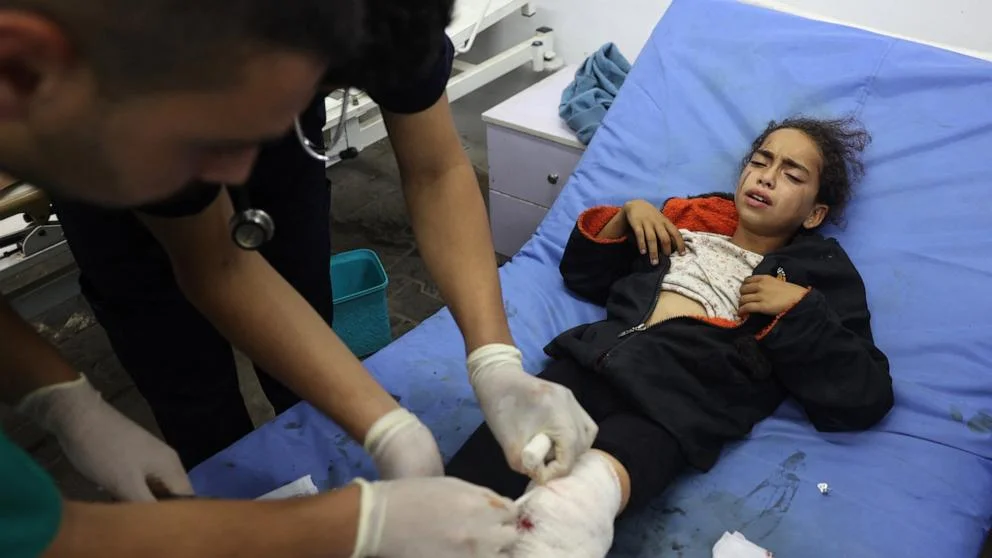
A Palestinian girl, wounded in an Israeli strike on a camp for displaced Gazans, receives treatment at a hospital in Rafah, May 26, 2024.
The devastating airstrikes resulted in significant casualties. At least 40 Palestinians, most of whom were displaced women and children, were killed during this barbaric bombardment 13. The Gazan Health Ministry reported that the strikes claimed the lives of 40 martyrs and left dozens injured, predominantly children and women 13. Additionally, the Palestine Red Crescent Society mobilized its ambulance crews to transport the victims to nearby medical centers 13. Witnesses reported that the attack led to fires that continued to rage, further endangering the lives of those in the area 13.
Statements from Gazan Officials and Witnesses
The response from Gazan officials and witnesses was one of horror and condemnation. A Palestinian paramedic described retrieving a large number of child martyrs from the bombardment, including a child without a head and children whose bodies had turned into fragments 13. The media office in Gaza labeled the attack on the U.N. agency-run center in Tal al-Sultan near Rafah as a “horrific massacre” and a clear message from Israel to the International Court of Justice and the international community that attacks against civilians in Gaza continue 13. Furthermore, the Israeli army, while admitting to civilian casualties, stated that the attack targeted a Hamas compound and that the incident was under review 13. Nabil Abu Rudeineh, a spokesman for Palestinian President Mahmoud Abbas, condemned the attack as a “massacre that exceeds all boundaries” and stressed the urgent need for international intervention to stop the crimes against the Palestinian people 10.
International Reactions
Statements from International Leaders
Qatar’s Foreign Ministry expressed concern that the Rafah attack complicates efforts to mediate a ceasefire and the return of hostages held in Gaza 20. Similarly, European Union Foreign Policy Chief Josep Borrell highlighted the challenge the international community faces in enforcing the International Court of Justice’s recent order to halt Israel’s offensive in Rafah 20. U.N. Secretary-General Antonio Guterres stressed the importance of protecting civilians and meeting their basic needs for food, water, and shelter, while emphasizing that Israeli authorities must facilitate the safe delivery of humanitarian supplies from Egypt entering through the Kerem Shalom crossing 20.
Responses from Humanitarian Organizations
ActionAid Palestine’s Country Director, Jamil Sawalmeh, criticized the ongoing ground invasion in Rafah, noting that it only increases human suffering and forces people into overcrowded so-called ‘humanitarian zones’ where many cannot find shelter 21. Médecins Sans Frontières (MSF) expressed horror over the Israeli attack on the camp for displaced Palestinians in Tal as-Sultan, emphasizing that the deadly event proves that nowhere in Gaza is safe and reiterated its call for an immediate and sustained ceasefire 17.
Potential Implications for Diplomacy and Peace Efforts
The International Criminal Court (ICC) is considering arrest warrants for top figures from both Israeli and Hamas sides, highlighting the gravity and potential consequences of the ongoing conflict 16. The United Nations’ agency for Palestinian refugees (UNRWA) expressed horror and concern for the safety of its staff and civilians in the area, describing the situation in Gaza as “hell on earth” 18. Furthermore, Saudi Foreign Minister Faisal bin-Farhan voiced concerns at a European meeting that Israel’s actions undermine the possibility of a two-state solution, which is essential for lasting peace and security in the region 18.
Analysis and Impact
Humanitarian Impact on Gazan Civilians
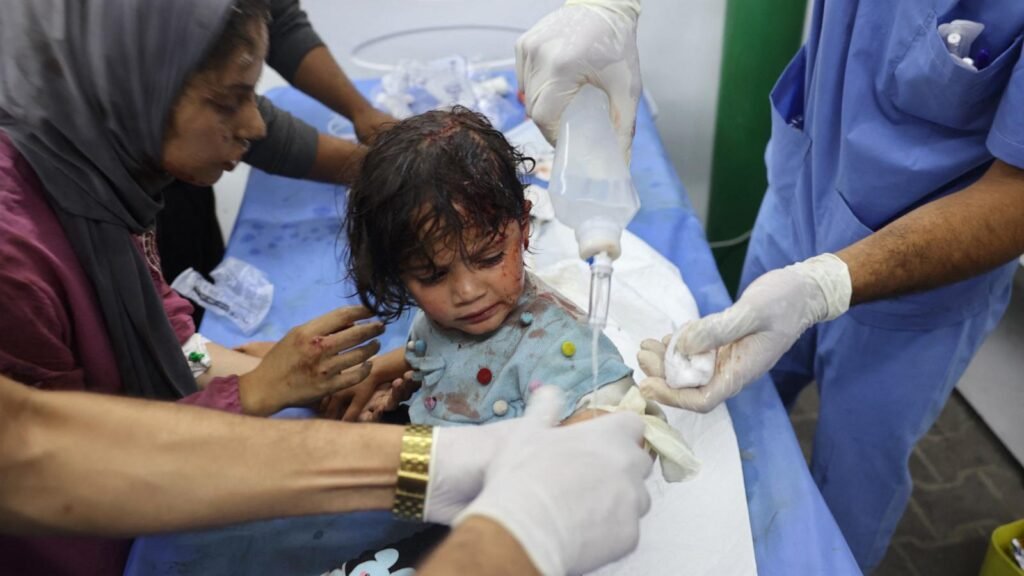
A Palestinian girl, wounded in an Israeli strike on a camp for displaced Gazans, receives treatment at a hospital in Rafah, May 26, 2024.
The recent Israeli strikes in Rafah have exacerbated an already dire humanitarian situation, with significant casualties reported, including many women and children. The UN’s agency for Palestinian refugees has expressed horror at the situation, describing Gaza as “hell on earth” with images from the attacks serving as stark evidence of the devastation 33. The impact on children is particularly severe, with approximately 620,000 children out of school for nearly eight months, further jeopardizing their future and well-being 33.
The Gazan Health Ministry reported mass casualties from the strikes, emphasizing the high number of women and children among the victims 33. Additionally, makeshift classrooms in tents are now a common sight in areas like al-Mawasi, indicating a severe disruption in education and normal life 33.
Historical Context of the Conflict
The roots of the Israeli-Palestinian conflict are deep and complex, dating back well before the establishment of the state of Israel in 1948 25. This historical backdrop is crucial for understanding the persistent state of tension and conflict in the region. The recent escalation in Rafah is just the latest in a long series of confrontations that reflect the ongoing struggle over territory and sovereignty, compounded by deep-seated mistrust between the parties involved.
Potential Long-Term Implications
The strategic decisions made today regarding the conflict, such as the evacuation orders and military operations in Rafah, are likely to have long-lasting effects on human suffering and regional stability 26. The UN humanitarian chief highlighted the critical juncture at which the current conflict stands, with the potential for more death and displacement 26. This situation could lead to generational reproaches if not addressed with foresight and responsibility 26.
Furthermore, the international community’s response, or lack thereof, to these events will also play a crucial role in shaping future diplomatic relations and peace efforts. The potential for an expanded ground offensive in Rafah raises concerns about a catastrophic humanitarian crisis and poses a direct threat to the stability of neighboring countries like Egypt 32.
Conclusion
Throughout this exploration of the Rafah Safe Zone attack within the broader context of the Israeli–Palestinian conflict, we have scrutinized the multifaceted dimensions of a struggle defined by territorial disputes, political tensions, and the profound human toll extracted on both sides. The incident at Rafah, with its significant casualties, including women and children, not only reaffirms the enduring tragedy of this conflict but also offers a stark reminder of the urgent need for a peaceful resolution. By delving into historical precedents, the current political climate, and the international reactions to these events, we draw closer to understanding the complexities and the dire human consequences arising from this protracted confrontation.
The implications of the Rafah attack extend far beyond the immediate devastation, underscoring the critical importance of sustained diplomatic efforts and international intervention aimed at facilitating a ceasefire and advancing towards a lasting peace. It is incumbent upon global actors, regional stakeholders, and the parties at the heart of this conflict to consider the broader humanitarian and political repercussions of their actions, striving towards solutions that uphold human rights, promote stability, and pave the way for mutual recognition and reconciliation. As we reflect on these events and their place within the larger narrative of the Israeli–Palestinian conflict, it becomes evident that the path to peace is fraught with challenges yet remains an imperative quest for the future wellbeing of all involved.
References
[1] – https://www.aljazeera.com/news/liveblog/2024/5/27/israels-war-on-gaza-live-news-35-killed-in-rafah-tent-bombings
[2] – https://www.washingtonpost.com/world/2024/05/27/israel-hamas-war-news-gaza-palestine-rafah/
[3] – https://www.aljazeera.com/news/liveblog/2024/5/26/israels-war-on-gaza-live-news-hamas-claims-capture-of-israeli-troops
[4] – https://www.cfr.org/global-conflict-tracker/conflict/israeli-palestinian-conflict
[5] – https://www.npr.org/2024/05/08/1249657561/rafah-timeline-gaza-israel-hamas-war
[6] – https://www.ajc.org/IsraelConflictTimeline
[7] – https://www.npr.org/2024/05/08/1249657561/rafah-timeline-gaza-israel-hamas-war
[8] – https://en.wikipedia.org/wiki/Timeline_of_the_Israel%E2%80%93Hamas_war_(28_October_%E2%80%93_23_November_2023)
[9] – https://en.wikipedia.org/wiki/Timeline_of_the_Israel%E2%80%93Hamas_war
[10] – https://www.aljazeera.com/news/liveblog/2024/5/27/israels-war-on-gaza-live-news-35-killed-in-rafah-tent-bombings
[11] – https://www.washingtonpost.com/world/2024/05/27/israel-hamas-war-news-gaza-palestine-rafah/
[12] – https://abcnews.go.com/International/live-updates/israel-hamas-gaza-may/death-toll-in-rafah-airstrike-rises-to-50-action-aid-uk-110576958?id=110380947
[13] – https://www.dailysabah.com/world/mid-east/israeli-bombing-of-rafah-safe-zone-kills-at-least-40-palestinians
[14] – https://www.icc-cpi.int/news/statement-icc-prosecutor-karim-aa-khan-kc-applications-arrest-warrants-situation-state
[15] – https://www.scmp.com/news/world/middle-east/article/3264192/israeli-air-strikes-kill-least-35-rafah-say-gaza-authorities-israel-reviewing-incident
[16] – https://www.washingtonpost.com/world/2024/05/27/israel-hamas-war-news-gaza-palestine-rafah/
[17] – https://www.aljazeera.com/news/liveblog/2024/5/27/israels-war-on-gaza-live-news-35-killed-in-rafah-tent-bombings
[18] – https://www.aljazeera.com/news/liveblog/2024/5/26/israels-war-on-gaza-live-news-hamas-claims-capture-of-israeli-troops
[19] – https://abcnews.go.com/International/humanitarian-workers-doctors-describe-horrific-situation-rafah-israel/story?id=110020664
[20] – https://www.voanews.com/a/un-agency-calls-gaza-hell-on-earth-after-deadly-israeli-airstrike-in-rafah/7628255.html
[21] – https://www.amnesty.org/en/latest/news/2024/05/world-leaders-fail-to-act-as-israeli-invasion-of-rafah-worsens-humanitarian-catastrophe/
[22] – https://www.aljazeera.com/news/liveblog/2024/5/27/israels-war-on-gaza-live-news-35-killed-in-rafah-tent-bombings
[23] – https://www.atlanticcouncil.org/blogs/menasource/rafah-egypt-israel-peace-sisi-camp-david/
[24] – https://press.un.org/en/2024/sc15669.doc.htm
[25] – https://www.washingtonpost.com/world/2024/05/06/rafah-israel-displaced/
[26] – https://www.aljazeera.com/news/liveblog/2024/5/7/israels-war-on-gaza-live-israel-blasts-rafah-fate-of-ceasefire-uncertain
[27] – https://www.ajc.org/news/everything-you-need-to-know-about-rafah-its-importance-to-hamas-and-protecting-its-civilian
[28] – https://www.aljazeera.com/news/liveblog/2024/5/26/israels-war-on-gaza-live-news-hamas-claims-capture-of-israeli-troops
[29] – https://www.washingtonpost.com/world/2024/05/27/israel-hamas-war-news-gaza-palestine-rafah/
[30] – https://www.aljazeera.com/news/liveblog/2024/5/7/israels-war-on-gaza-live-israel-blasts-rafah-fate-of-ceasefire-uncertain
[31] – https://www.aljazeera.com/news/liveblog/2024/5/27/israels-war-on-gaza-live-news-35-killed-in-rafah-tent-bombings
[32] – https://www.atlanticcouncil.org/blogs/menasource/rafah-egypt-israel-peace-sisi-camp-david/
[33] – https://www.aljazeera.com/news/liveblog/2024/5/26/israels-war-on-gaza-live-news-hamas-claims-capture-of-israeli-troops
[34] – https://www.aljazeera.com/news/liveblog/2024/5/26/israels-war-on-gaza-live-news-hamas-claims-capture-of-israeli-troops
[35] – https://www.reuters.com/world/middle-east/more-aid-trucks-expected-roll-into-gaza-2024-05-26/
[36] – https://www.cfr.org/global-conflict-tracker/conflict/israeli-palestinian-conflict
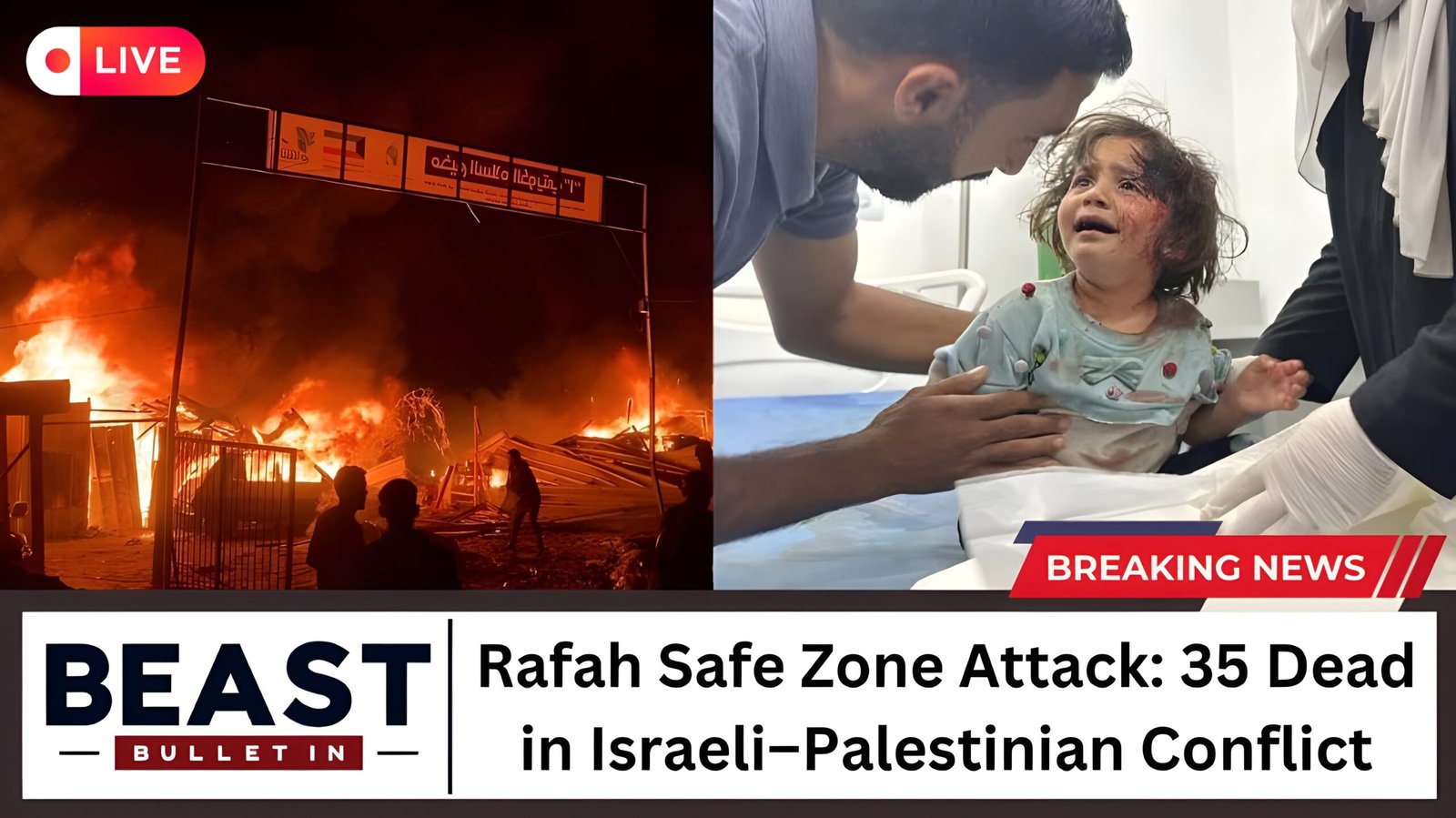







Discussion about this post